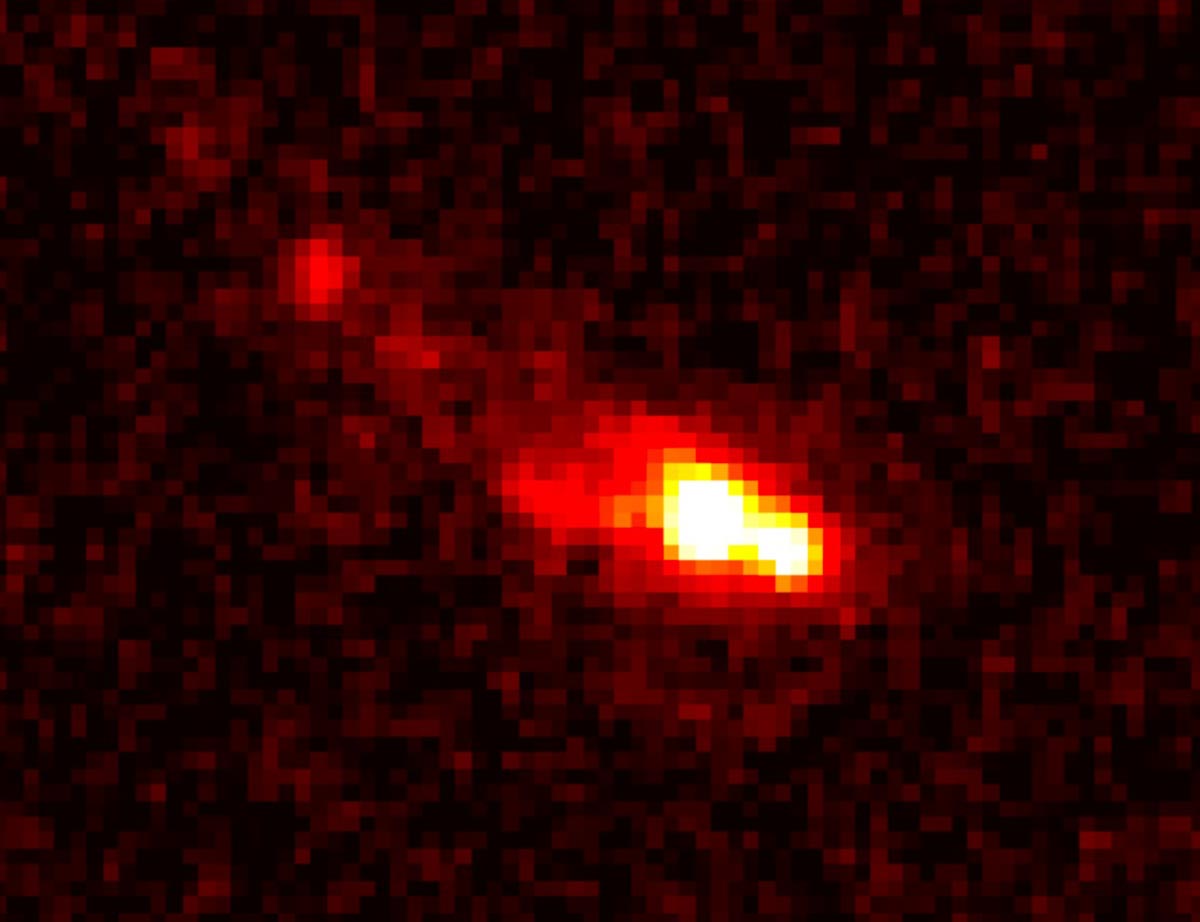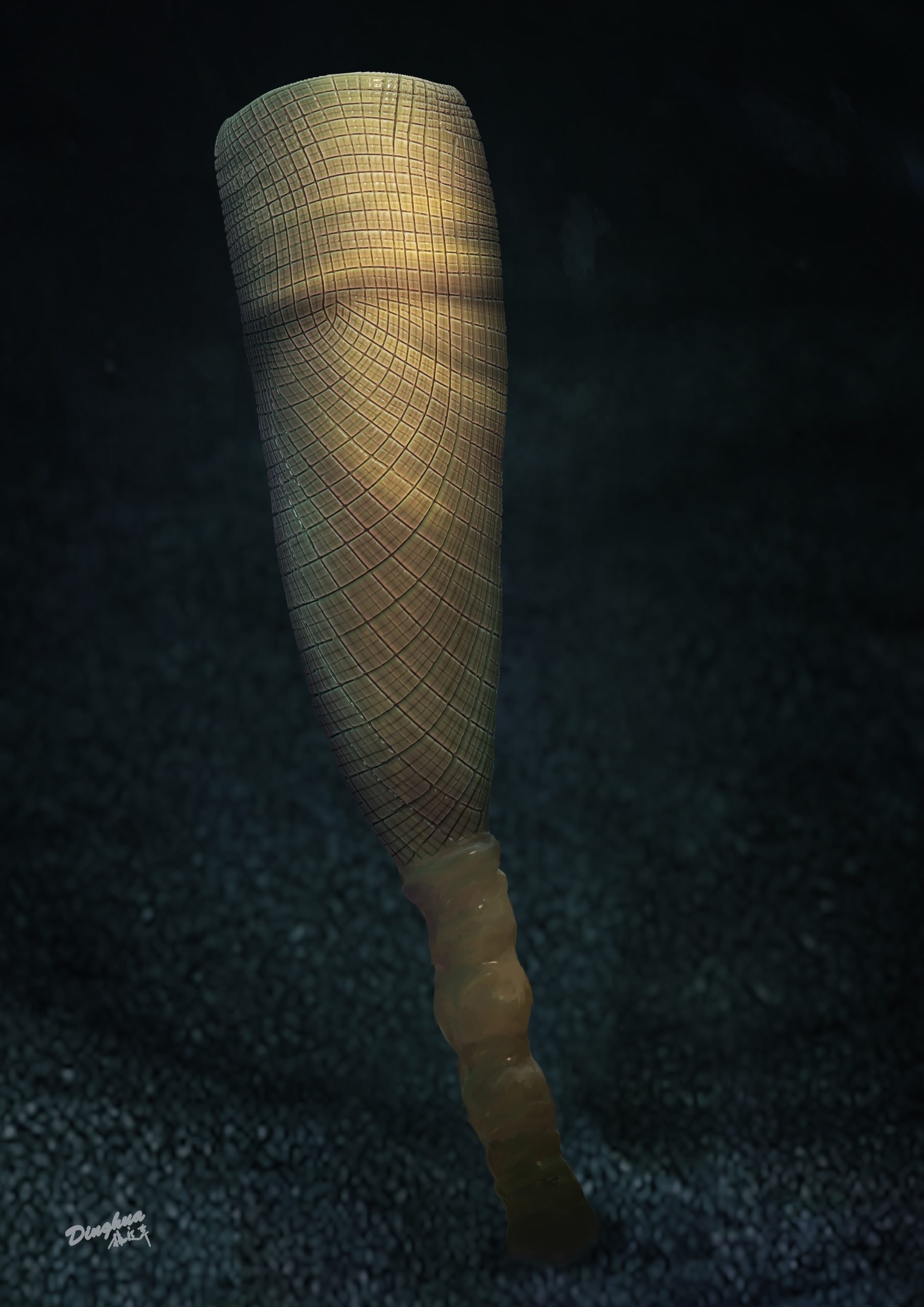NASA’s James Webb Space Telescope has revealed the most distant galaxies ever discovered, some of which date back to just 300 million years after the creation of the universe in the Big Bang – a time when the universe was only 2% of its current age.
The primordial galaxies were found by an international team of scientists who were responsible for designing two of JWST’s newest instruments. The first instrument, known as the Near Infrared Camera (NIRCam), is tasked with observing a small patch of the night sky in the constellation Fornax.
Over the course of 10 days, NIRCam observed light from a group of nearly 100,000 galaxies over nine infrared wavelengths. From this dataset, astronomers isolated 250 of the faintest and reddest galaxies, and targeted them with another of JWST’s instruments – the Near Infrared Spectrometer (NIRSpec).
NIRSpec is designed to collect the light emitted by celestial bodies, and break it down into its component colours. This process creates rainbow-like graphs called spectra. Astronomers can analyze a galaxy’s spectra to discover everything from its elemental composition, to how many stars are within it, and even its distance from Earth.
The latter is made by measuring a phenomenon known as redshift. Light from distant galaxies can take billions of years to reach our planet. During this time, the wavelengths of this light stretch and become longer, slowly moving into the “red” part of the light spectrum.
When light travels toward Earth from its source, it will inevitably pass through vast clouds of interstellar dust and gas. These clouds are known to be good at absorbing certain wavelengths of light, while allowing others to pass through relatively unimpeded. This interference creates a distinct pattern in the rainbow spectrum.
A graphic showing the positions and redshifts of galaxies Anton M. Koekemoer (STScI), Christopher Willmer (University of Arizona), JWST PEARLS Team Image processing: Rolf A. Jansen (ASU), Alyssa Pagan (STScI))
Scientists were able to work out the age and distance of distant galaxies by observing how much the patterns in the spectra shifted from their expected locations due to the redshift.
Using this technique, scientists have discovered four enormously ancient galaxies that lie within the JWST data, which are believed to have formed just 300 million years after the creation of the universe in the Big Bang. This makes it 100 million years younger than the oldest galaxy ever discovered by the Hubble Space Telescope.
This means that the light detected by the JWST left its source about 13.4 billion years ago, at a time when the universe was only 2% of its current age. The galaxies’ record-breaking ages will make them invaluable to scientists trying to uncover the evolutionary secrets of the early universe.
“It is difficult to understand galaxies without understanding the early periods of their evolution,” explained astronomer Sandro Takela of the University of Cambridge, who co-authored a study describing the findings. University of Arizona). “As with humans, much of what happens next depends on the influence of these early generations of stars.”
“So many intergalactic questions have been waiting for Webb’s transformative opportunity, and we’re thrilled to be able to play a part in uncovering this story.”
Stick to IGN to stay up to date on the latest and weirdest developments in the world of science.
Image credit: Northrop Grumman.
Anthony is a freelance contributor covering science and video game news for IGN. He has more than eight years of experience covering breaking developments in multiple scientific fields and there is absolutely no time to fool you. Follow him on Twitter @BeardConGamer

“Explorer. Unapologetic entrepreneur. Alcohol fanatic. Certified writer. Wannabe tv evangelist. Twitter fanatic. Student. Web scholar. Travel buff.”



